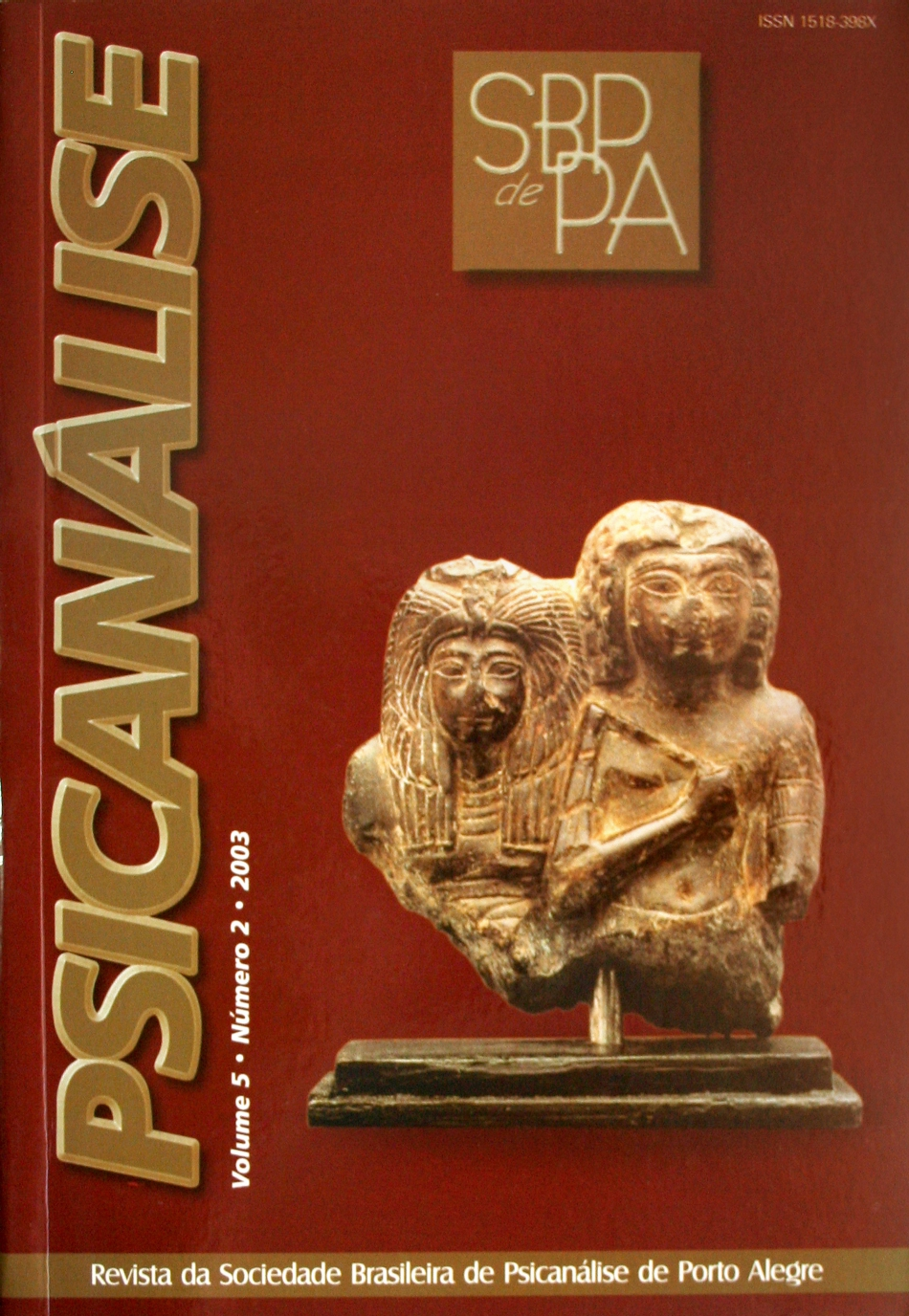What is true and whose idea was it?
Keywords:
Truth, Rêverie, Memory, Initial sessionAbstract
In this paper, the author explores the idea that psychoanalysis at its core involves an effort on the part of patient and analyst to articulate what is true to an emotional experience in a form that is utilizable by the analytic pair for purposes of psychological change. Building upon the work of Bion, what is true to human emotional experience is seen as independent of the analyst’s formulation of it. In this sense, we, as psychoanalysts, are not inventors of emotional truth, but participant observers and scribes. And yet, in the very act of thinking and giving verbally symbolic ‘shape’ to what we intuit to be true to an emotional experience, we alter that truth. This understanding of what is true underlies the analytic conception of the therapeutic action of interpretration: in interpreting, the analyst verbally symbolizes what he feels is true to the patient’s unconscious experience and, in so doing, alters what is true and contributes to the creation of a potentially new experience with which the analytic pair may do psychological work. These ideas are illustrated in a detailed discussion of an analytic session. The analyst makes use of his reverie experience – for which both and neither of the members of the analytic pair may claim authorship – in his effort to arrive at tentative understandings of what is true to the patient’s unconscious emotional experience at several junctures in the session.
Downloads
References
BION, W. (1962). Learning from experience. New York: Basic Books.
______. (1963). Elements of psycho-analysis. In: ______. Seven servants. New York: Aronson, 1977.
______. (1971). Attention and interpretation. In: ______. Seven servants. New York: Aronson, 1977.
______. (1975). Brasilia clinical seminars. In: ______. Clinical seminars and four papers. Oxford: Fletwood Press, 1987. p. 1-130.
______. (1976). On a quotation from Freud. In: ______. Clinical seminars and four papers. Oxford: Fletwood Press, 1987. p. 234-238.
______. (1978). São Paulo clinical seminars. In: ______. Clinical seminars and four papers. Oxford: Fletwood Press, 1987. p.131-222.
______. (1982). The long week-end, 1897-1919. Oxford: Fletwood Press.
______. (1992). Cogitations. London: Karnac.
BORGES, J.L. (1923). Preface. Fervor de Buenos Aires. In: DiGIOVANNI, N.T. (ed.). Jorge Luis Borges: selected poems, 1923-1967. New York: Dell, 1973. p. 268-269.
______. (1941). Pierre Menard, author of the Quixote. In: YATES, D. & IRBY, J. (ed.). Labyrinths: selected stories and other writings. Trad. J. Irby. New York: New Directions, 1962. p. 36-44.
______. (1949).Everything and nothing. In: YATES, D. & IRBY, J. (ed.). Labyrinths: selected stories and other writings. Trad. J. Irby. New York: New Directions, 1962. p. 248-249.
______. (1967). This craft of verse. MIHAILESCU, C.-A. (ed.): Cambridge, MA: Harvard University Press, 2000.
FAIRBAIRN, W.R.D. (1952). Psychoanalytic studies of the personality. London: Routledge & Kegan Paul, 1981.
FREUD, S. (1917). Mourning and melancholia. S.E., v. 14.
FROST, R. (1939). The figure a poem makes. In: POIRIER, R. ; RICHARDSON, M. (ed.). Robert Frost: collected poems, prose and plays. New York: Library of America, 1995. p. 776-778.
HEANEY, S. (1979). Song. In: Opened ground: selected poems, 1966-1996. New York: Farrar, Strauss & Giroux, 1998. p. 173.
KLEIN, M. (1935). A contribution to the psychogenesis of manic-depressive states. In: Contributions to psycho-analysis, 1921-1945. London: Hogarth Press, 1968. p. 282-310.
______. (1940). Mourning and its relations to manic-depressive states. In: Contributions to psycho-analysis, 1921-1945. London: Hogarth Press, 1968. p. 311-338.
OGDEN, T. (1994). The analytic third: working with intersubjective clinical facts. Int. J. Psycoanal., v. 75, p. 3-20.
______. (1997). Rêverie and interpretation: sensing something human. Northvale, N.J.: Aronson; London: Karnac.
______. (2001). Conversations at the frontier of dreaming. Northvale, N.J.: Aronson; London: Karnac.
______. (2002). A new reading of the origins of object-relations theory. Int. J. Psycoanal., v. 83, p. 767-782.
WOODS, M. (1994). The magician’s doubts: Nabokov and the risks of fiction. Princeton: NJ: Princeton University Press.
Downloads
Published
How to Cite
Issue
Section
License

This work is licensed under a Creative Commons Attribution-NonCommercial-NoDerivatives 4.0 International License.
I attribute the copyrights that belong to me, on this work, to SBPdePA, which may use and publish it by the means it deems appropriate, including on the Internet or in any other computer processing.












